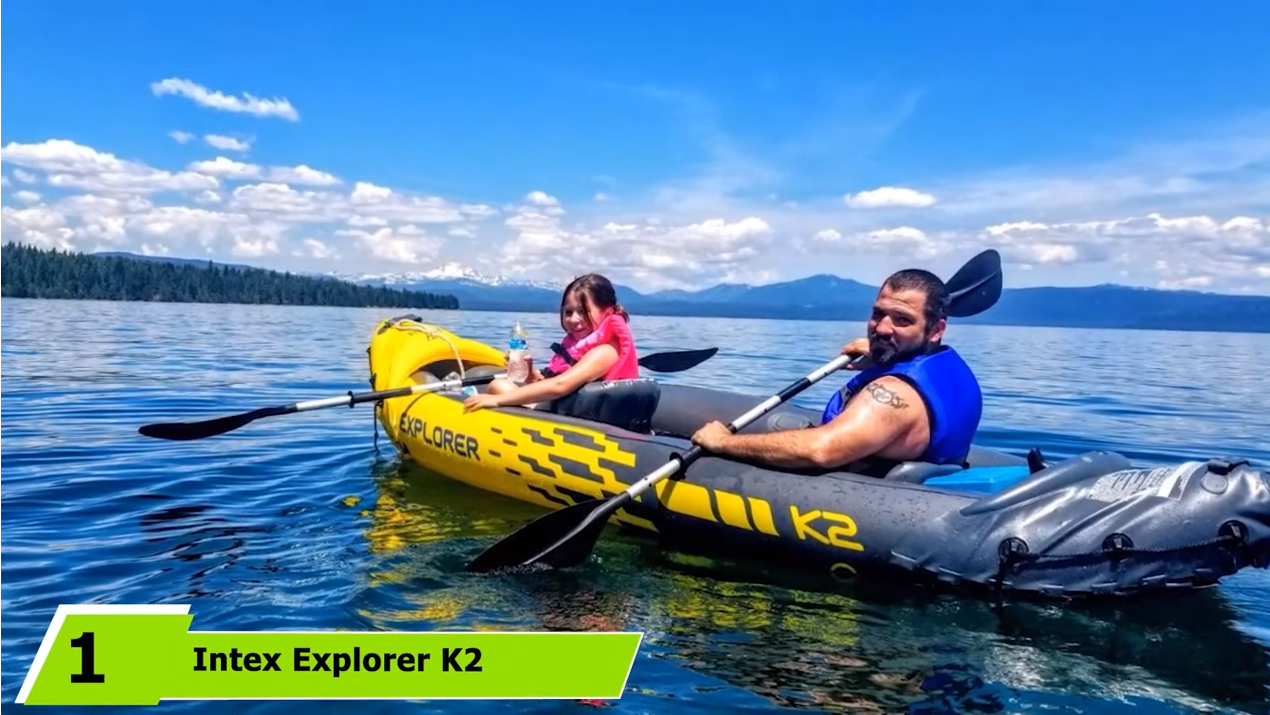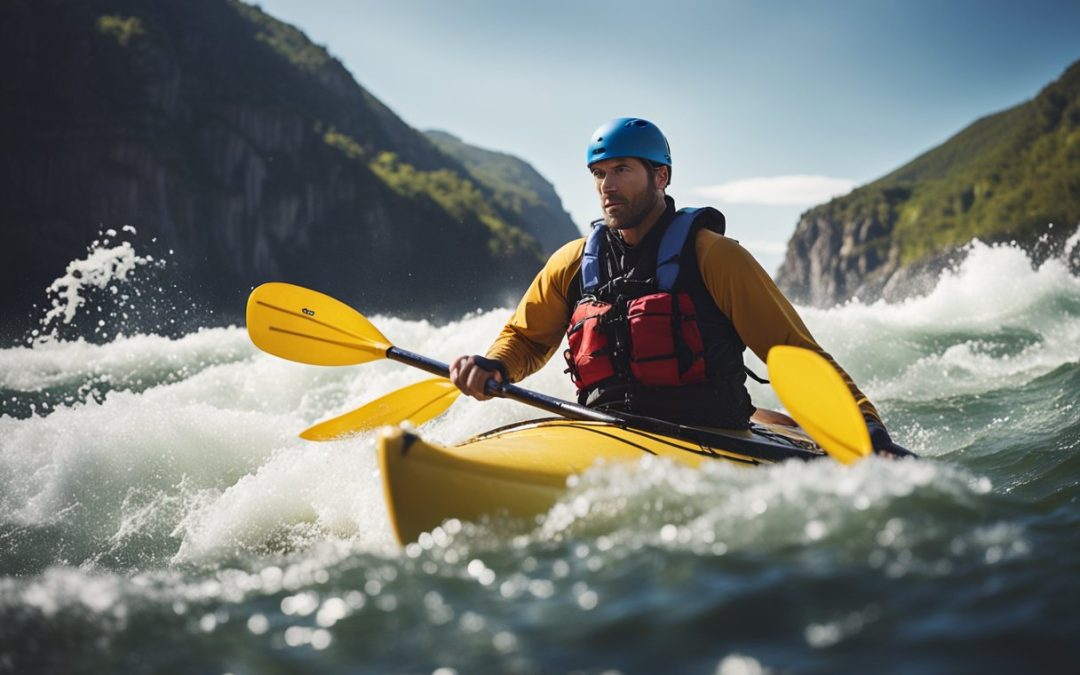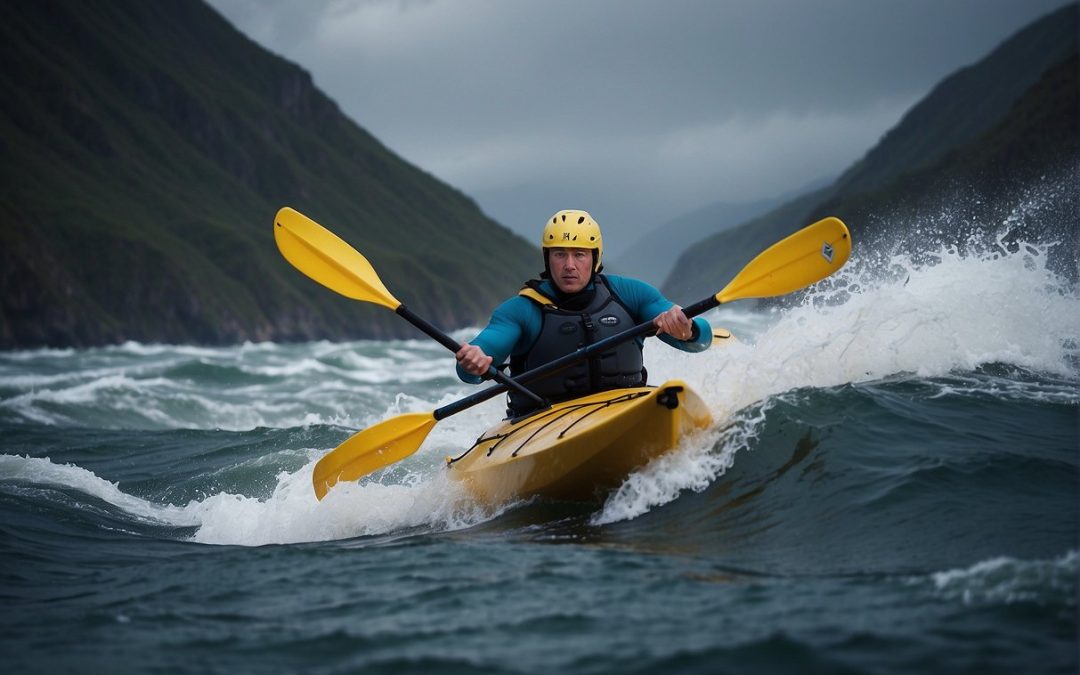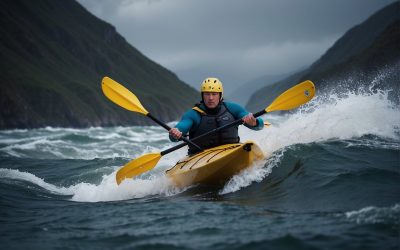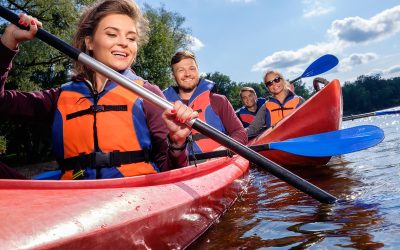Lifevest Impact Mobility, Paddling Technique: Optimizing Performance and Safety in Water Sports
Life vests are an essential piece of safety equipment for anyone engaging in water-based activities, including paddle sports. However, not all life vests are created equal when it comes to paddling. Some life vests can hinder mobility and have a negative impact on paddling technique. Understanding the relationship between life vest design and paddling performance is crucial for selecting the right personal flotation device (PFD) that offers both safety and comfort.

When choosing a life vest for paddling, it’s important to consider how the vest’s design and features will affect your range of motion and overall paddling experience. Certain life vests are specifically designed for paddling, with features such as larger arm openings, adjustable straps, and strategically placed foam panels for maximum mobility. These designs allow for a greater freedom of movement without compromising safety.
Key Takeaways
- Life vests for paddling should allow for mobility and not hinder technique
- Paddling-specific life vest designs offer enhanced freedom of movement
- Choosing the right life vest is crucial for comfort and safety while paddling
Understanding Life Vests

Types of Life Vests
There are several types of life vests, each designed for specific purposes and environments. The most common types include Type I, Type II, and Type III. Type I life jackets provide the most buoyancy and are designed for rough or remote waters where rescue may be delayed. They are generally bulkier than other types but offer the best flotation capabilities. Type II life vests are less bulky than Type I and are suitable for calm, inland waters where quick rescue is expected. Type III life jackets offer a balance between buoyancy and comfort, making them ideal for recreational activities such as kayaking, canoeing, and stand-up paddleboarding, where mobility is important ^1^.
U.S. Coast Guard Approval
For safety purposes, life vests must have U.S. Coast Guard approval. This ensures that the life vest meets specific design, performance, and quality standards. Always look for the U.S. Coast Guard-approved label when purchasing a life vest.
Materials and Durability
Life vests are typically made from durable materials like nylon, neoprene, and foam. Nylon life jackets are lightweight, breathable, and quick-drying. Neoprene life jackets provide added comfort and have neoprene comfort pads, making it a popular choice for water sports enthusiasts. Foam life jackets offer buoyancy and are available in different thicknesses, providing different levels of flotation.
| Material | Advantages |
|---|---|
| Nylon | Lightweight, breathable, quick-drying |
| Neoprene | Comfortable, increase mobility |
| Foam | Buoyant, varying flotation levels |
Life Vest Fit and Sizing
A good life vest fit is crucial for both comfort and safety. Life vests come in various sizes, and adult life jackets are made for individuals weighing over 90 pounds ^2^. Children’s life jackets are sized based on the child’s weight. To ensure a proper fit, look for life vests with adjustable straps, so you can snugly fit the straps to your body.
When putting on a life vest, first loosen all the adjustment straps and then put on the life vest. Start by cinching the lower strap just below the rib cage to anchor the life vest and prevent it from riding up. Then, move up the life vest and snugly fit the straps to your body. Finally, tighten the shoulder straps for a secure fit ^3^.
Impact on Mobility

Mobility in Paddling Sports
When considering mobility in paddling sports such as kayaking and paddleboarding, it’s essential to evaluate how equipment like life vests can impact an individual’s ability to move freely and maintain proper paddling techniques. For both kayaking and paddleboarding, an individual’s range of motion is crucial to ensure efficient propulsion and overall enjoyment of the sport.
During kayaking, mobility in the shoulder area is especially important as the arms engage in repetitive motion for paddle strokes. For paddleboarding, torso and arm movements are highly involved in maintaining balance and steering across the water.
Design Features for Movement
Life vests play a crucial role in ensuring the safety and comfort of paddlers while participating in these sports. To maximize mobility, there are several design features to consider when selecting a life vest:
- Shoulder straps: Life vests with adjustable and well-padded shoulder straps offer increased comfort and mobility, allowing paddlers to fine-tune their fit for optimal freedom of movement.
- Wide armholes: Life vests with wide armholes provide paddlers with enhanced shoulder mobility, making it easier to paddle without feeling restricted.
- Slim fit: Slim-fitting life vests are designed to hug the body’s contours and reduce any extra bulk, ensuring minimal interference with the paddler’s movements.
- Flexible foam padding: Foam padding in essential life vest areas, such as the chest and back, should be flexible to allow for a comfortable fit and unobstructed torso rotation during paddling activities.
Consideration of these design features ensures that both kayakers and paddleboarders can enjoy their sport with minimal restriction and maximum safety. Through careful selection of life vests with the above features, individuals can experience increased comfort and mobility while participating in their favorite paddling activities.
Paddling Technique and Life Vest Design

Influence of Vest Shape on Technique
In the world of water sports, there are various types of life vests designed to accommodate different activities. For instance, kayak life vests and life jackets for paddle boarding have specific designs to allow for maximum mobility and performance. It is worth considering how the vest’s shape and design can play a significant role in paddling technique.
Generally, life vests for paddling activities have a narrower profile and ample arm openings. This design choice helps minimize interference with arm movement during paddling, thus promoting an efficient technique. Additionally, strategically placed foam inserts help maintain buoyancy without hindering mobility.
A comparison of life vest designs shows the following differences:
| Activity | Life Vest Design |
|---|---|
| Kayaking | High-back, narrow profile, large arm openings |
| Paddle Boarding | Low-profile, inflatable belt or vest style, minimal bulk |
Adjustment for Optimal Paddling
A significant aspect of achieving optimal paddling performance with a life vest is fine-tuning its fit using adjustment points. It is crucial to select the appropriate size and adjust the jacket to conform to your body shape while allowing for unrestricted movement during paddling.
Here are some critical steps for adjusting a life vest for optimal paddling:
- Make sure the life vest is unfastened and loose.
- Put it on, zipping or buckling the front closure.
- Tighten the lower straps first, ensuring a snug fit around your torso.
- Adjust the shoulder straps, avoiding excessive tightening that may restrict arm movement.
- If the vest has side adjustment points, use them for further fine-tuning.
By following these steps, you’ll ensure that the life vest remains securely in place during paddling while still allowing for unrestricted movement. This tailored fit helps maintain proper technique, enabling you to better enjoy your water sport adventures.
Life Vest Features for Paddlers
Pockets and Storage
Life vests designed for paddlers often include pockets and storage compartments for easy access to essential items. These pockets typically feature zipper closures to securely store gear such as snacks, sunscreen, and navigation tools. Some vests may also have mesh compartments for additional storage capacity. The presence of pockets and storage spaces can enhance the user experience by allowing paddlers to keep their belongings close at hand while on the water.
Emergency Preparedness Features
A well-designed life vest should include features that enhance safety and emergency preparedness. This can include an attached whistle to signal for help or warn other watercraft of your presence. Additionally, many paddler-specific vests come with a lash tab, a small fabric loop on the front of the vest, which can be used to attach necessary safety gear such as a knife or rescue strobe.
Life vests with integrated CO2 cartridges provide an added layer of safety, as these cartridges allow the vest to automatically inflate upon immersion in water. For increased visibility in low-light conditions, some vests feature SOLAS grade reflective material that can help signal rescuers or make other water users aware of your presence.
Ventilation and Comfort
Paddling involves a great deal of physical activity, and a well-designed life vest will take comfort and ventilation into consideration. Ventilation is crucial in maintaining comfort during long paddling excursions. Look for vests with mesh panels or strategically placed ventilation channels that promote airflow and help regulate body temperature.
Comfort-enhancing features vary from vest to vest, but some options include adjustable shoulder straps, padded areas, and molded foam. These features can help to evenly distribute the weight of the vest and prevent chafing during long paddling sessions. Additionally, consider a vest with a high back so it won’t interfere with your seat while paddling.
In summary, paddlers should look for life vests that offer adequate pockets and storage, emergency preparedness features, and ventilation and comfort for optimal performance on the water.
Selecting the Right Life Vest
PFDs for Different Paddling Activities
When selecting a Personal Floatation Device (PFD) for kayaking or other paddling activities, it is important to consider the specific activity you plan to engage in. For instance, there are different types of PFDs, such as the high-back PFD, which is ideal for kayaks with high seat backs. On the other hand, a foam life jacket can be considered a versatile option suitable for various paddling techniques.
Considerations for Fit and Comfort
Proper fit and comfort are crucial when selecting a PFD for paddling activities. To ensure the best fit, make sure to:
- Loosen all adjustment straps before putting on the jacket.
- Firmly tighten the lower strap below the rib cage to prevent the jacket from riding up.
- Adjust the remaining straps snugly for a secure fit.
Always try on different life vests to find the most comfortable option. Factors such as side-zip, front-zip, or mesh-back can impact your overall comfort while paddling.
Comparing Price and Quality
Price and quality should also be taken into account when selecting the best kayak life vest. It can be tempting to choose the cheapest option available, but it is essential to consider the quality and safety features of the PFD as well. Investing in a higher-priced, well-regarded life vest may provide better flotation and durability, ensuring your safety on the water. For reliable recommendations, consult reviews and expert evaluation of PFDs before making a final decision.
In conclusion, selecting the right life vest is essential for ensuring safety, comfort, and optimal paddling performance. Consider the specific paddling activity you will be engaging in, prioritize the fit and comfort of the PFD, and weigh the price and quality when making your choice. With these factors in mind, you can confidently choose the best kayak life vest for your needs.
Life Vest Safety and Maintenance

Regular Inspection and Care
A life vest, also known as a personal flotation device (PFD), is a crucial piece of safety equipment when participating in water activities. In order to ensure the effectiveness of the life vest, proper safety and maintenance practices must be followed.
Firstly, make sure the life vest is approved by the US Coast Guard. This guarantees that the life vest meets certain safety standards and is made of high-quality materials. Next, it is important to examine the life vest periodically for any signs of wear and tear such as fraying straps, broken buckles, or tears in the fabric. Life vests can lose buoyancy over time, so it’s essential to check them for any signs of deterioration.
When not in use, store the life vest in a cool, dry place, away from direct sunlight. After each use, rinse it with fresh water, and allow it to air dry completely before storing.
To keep the life vest in good condition and maintain its durability, be sure to follow these guidelines:
- Avoid using harsh chemicals or solvents when cleaning the life vest, as these can damage the materials.
- Do not force the life vest into a confined space, as this can lead to creases or the foam becoming compressed.
- Routinely inspect the life vest for signs of wear and tear.
Replacing Life Vests
Even with proper care and maintenance, all life vests will eventually need to be replaced. It is recommended to replace a life vest if:
- It has been through a significant impact, such as a rescue or a collision.
- It no longer provides adequate buoyancy due to material degradation.
- The fabric or foam has visible tears or damage.
- The straps or buckles are damaged or no longer function correctly.
In addition, always consider the manufacturer’s guidelines and recommendations when deciding whether to replace a life vest. By regularly inspecting, caring for, and replacing life vests as needed, you can ensure that you are using an effective and reliable piece of safety equipment during your paddling adventures.
Popular Life Vest Models and Reviews

When considering a life vest for kayaking or other water sports, it’s important to find one that allows for optimal mobility and doesn’t hinder your paddling technique. In this section, we will discuss three popular life vest models that have garnered positive reviews for their comfort, design, and functionality: the Onyx Movevent Dynamic PFD, Stohlquist Edge Life Jacket, and NRS Ninja PFD.
Onyx Movevent Dynamic PFD
The Onyx Movevent Dynamic PFD has a unique design that caters to paddlers by offering excellent freedom of movement. This Type III life vest features:
- Ventilation: Designed with a mesh lower back, it allows for proper airflow, keeping you cool during extended periods of paddling.
- Flexibility: Its sculpted foam design and adjustable shoulder straps provide a comfortable fit, allowing for a wide range of motion.
- Visibility: The vest is available in a variety of colors, including bright options that enhance visibility in the water.
Stohlquist Edge Life Jacket
The Stohlquist Edge Life Jacket is another popular choice for kayakers due to its ergonomic design and functionality. Some of its features include:
- Body-hugging fit: This life jacket boasts a close-fitting, low-profile design that enables better mobility and minimizes interference while paddling.
- Ease of use: Stohlquist Edge has a side-entry zipper and adjustable waist and shoulder straps, ensuring a secure and comfortable fit.
- Extra storage: It comes equipped with a zippered front pocket for storing essential items like phone, keys, or whistle.
NRS Ninja PFD
NRS Ninja PFD is a compact life vest designed specifically for athletic paddlers and people with short torsos. Among its key features, you’ll find:
- Freedom of movement: Its low-profile design and side-entry system make it easy to paddle without restriction, providing uninhibited arm movement.
- Quick adjustments: The NRS Ninja PFD has 4 side adjustment points and 2 shoulder adjustments for customizable fitting.
- Storage: A spacious front pocket with a built-in lanyard offers a secure storage option for essential items.
All three of these life vests have received positive reviews on Amazon and other retail websites for their impact on mobility, paddling technique, and overall comfort. When choosing the right life vest, be sure to consider factors such as fit, adjustability, storage, and personal preferences in design and color.
Frequently Asked Questions

What are the key differences between Type III and Type V life vests when it comes to paddling activities?
Type III life vests are general-purpose flotation devices suitable for most recreational paddling activities, offering both comfort and mobility. They usually have large armholes and minimal additional padding, designed for extended wear and ease of movement while paddling. In contrast, Type V life vests are specialized, activity-specific devices that provide increased protection and buoyancy. These vests are recommended for high-impact watersports but may have a bulkier design, which could impact mobility and paddling technique.
How does the design of a life jacket influence the range of motion and paddling technique?
The design of a life jacket can greatly influence a paddler’s range of motion and overall paddling technique. A well-designed kayak life jacket or PFD will have a low profile, keeping most of its flotation away from the shoulders and upper chest. This allows for increased arm mobility and better body rotation while paddling. Large armholes and minimal padding are also essential for maintaining a comfortable and efficient paddling technique.
What are the safety features to look for in a life vest for high-impact watersports?
For high-impact watersports, safety features such as increased buoyancy, a snug fit, and quick-release buckles are important. Additional safety features may include reflective elements for improved visibility, pockets for storage, and attachment points for rescue equipment. It is also essential to choose a life vest that is approved by the appropriate regulatory agencies, such as the US Coast Guard or Transport Canada for North American users.
How should a paddling-specific life vest fit for optimal mobility and safety?
A paddling-specific life vest should fit snugly without restricting the range of motion. The life vest should not ride up on the body or chafe when paddling. To ensure a proper fit, adjust the straps on the sides, shoulders, and waist to eliminate any gaps or looseness. A well-fitting life vest will stay in place even when lifting your arms above your head, and it should not inhibit your ability to take deep breaths and move comfortably while seated in your watercraft.
What buoyancy level is recommended for a life vest used in paddle sports?
The buoyancy level of a life vest depends on the individual’s weight, body composition, and specific water conditions. Generally, a higher buoyancy level is recommended for more challenging water conditions or for inexperienced paddlers. Most adults need a minimum of 7 to 12 pounds of buoyancy to keep their head above water. However, it is essential to consult the manufacturer’s recommendations for the specific life vest and any relevant regulatory bodies to determine the appropriate buoyancy level for the intended use.
Are there any special considerations for selecting a life vest for kayaking versus paddle boarding?
While both kayaking and paddle boarding require similar life vest features, there are subtle differences to consider. For kayaking, a life vest with a high back design is beneficial, as it accommodates the kayak seat comfortably. Features such as large armholes and a low profile design are crucial for both activities to ensure optimal mobility. Paddle boarders may prefer a belt pack or inflatable life vest, as these options provide the required buoyancy while maintaining a minimalist design that won’t restrict movement when standing and paddling. Ultimately, comfort, fit, and individual preferences will play a role in selecting the appropriate life vest for each activity.
Conclusion

In the realm of kayaking and canoeing, the importance of selecting a suitable life vest cannot be overstated. One crucial aspect to consider is how a life vest facilitates mobility and paddling technique.
As seen in some life vests like the Curve Movevent by Onyx, the open sides and mesh lower back allow for optimal mobility when paddling. Ventilation on the front, back, and sides helps to keep the wearer cool and comfortable during extended periods on the water. Factors such as adjustable shoulder, waist, and side straps contribute to a snug and secure fit.
When selecting a life vest for kayaking, consider the following:
- Comfort and mobility to maintain proper paddling technique
- Adequate ventilation for temperature regulation
- Adjustable straps and features that conform to the body
- Ensuring compatibility with the wearer’s gender and body type
In conclusion, choosing the right life vest can significantly enhance the paddling experience for both casual and professional kayakers. It is essential to evaluate available options and prioritize mobility, comfort, fit, and safety while shopping for the ideal life vest for kayaking or canoeing.


